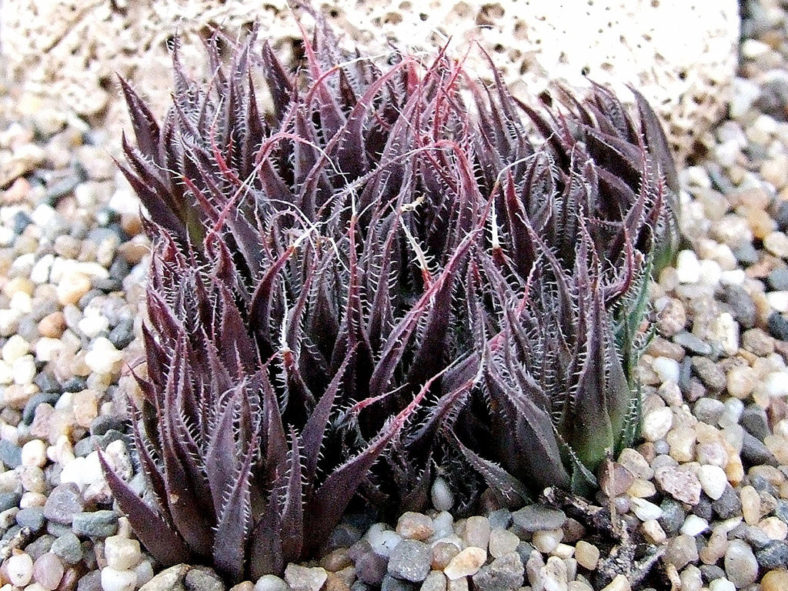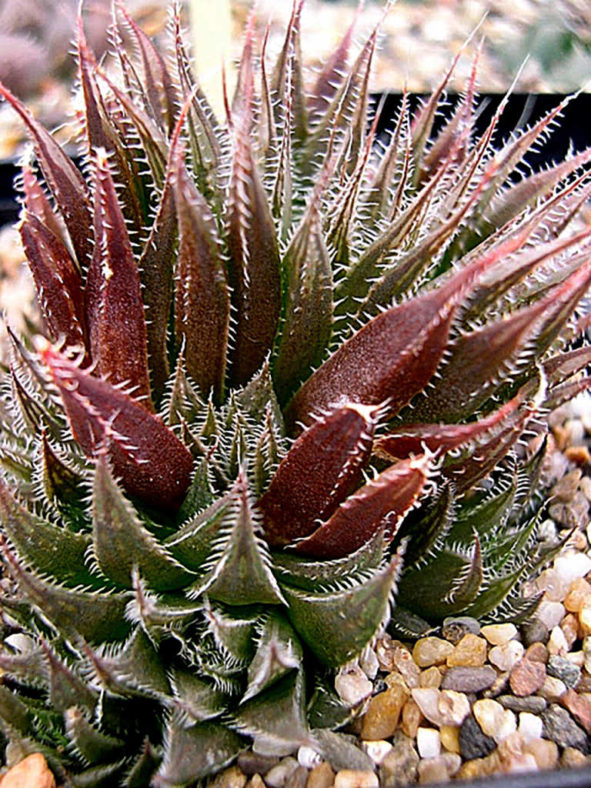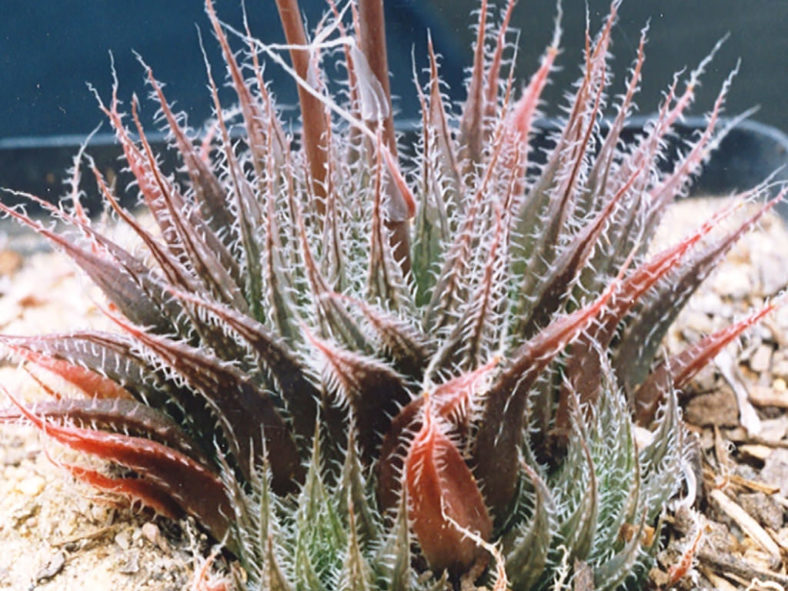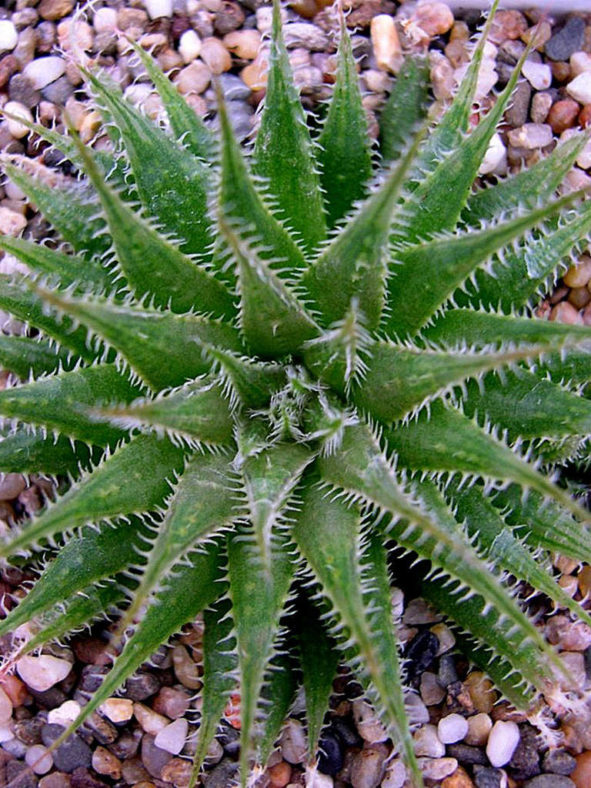Scientific Name
Haworthia cooperi var. doldii M.B.Bayer
Synonym(s)
Haworthia doldii, Haworthia tenera var. doldii
Scientific Classification
Family: Asphodelaceae
Subfamily: Asphodeloideae
Tribe: Aloeae
Genus: Haworthia
Etymology
The varietal epithet "doldii (DOL-dee-eye)" honors Tony Dold (born 1965), a plant taxonomist, ethnobotanist, and the curator of the Selmar Schonland Herbarium at the Albany Museum in Grahamstown, who collected this variety.
Origin
The native range of Haworthia cooperi var. doldii is South Africa. It was discovered growing on flat rocks in an area at Chalumna River (Tyolomnqa), west of East London in the Eastern Cape, due to the new bridge over the river, which made this area accessible to botanical exploration.
Description
Haworthia cooperi var. doldii is a small succulent that forms rosettes of erect to spreading leaves with translucent tips and firm, white spines on the margins and keel. The rosettes can grow to 1.2 inches (3 cm) in diameter and produce offsets, forming small clumps with age. The leaves are fleshy, attenuate, and can reach up to 2 inches (5 cm) in length. They are dark green or reddish to purplish when exposed to intense light.
The white flowers appear closely arranged on slender stalks that can grow up to 8 inches (20 cm) long.

How to Grow and Care for Haworthia cooperi var. doldii
Light: Place the potted plant in a bright area with some protection from the hottest rays of the day. White, yellow, or red-tinged leaves usually indicate that your H. cooperi var. doldii receives too much sunlight. Deep shade tends to weaken the plant over a prolonged period. If your plant has spent the winter indoors, gradually move it outdoors into the bright sun to prevent sunburn.
Soil: Like all Haworthias, this plant does not like its roots to remain wet for prolonged periods, so the soil should be well-drained. Use a commercial potting mix for succulents, or make your own.
Temperature: This succulent likes warmer in the summer but cool temperatures in the winter. However, it does not like being too cold. H. cooperi var. doldii can withstand temperatures as low as 30 °F (-1.1 °C). USDA Plant Hardiness Zones 10a to 11b, 30 to 50 °F (-1.1 to 10 °C).
Watering: In spring and fall, when the growth is most active, water H. cooperi var. doldii thoroughly, then wait until the top of the soil dries out before watering again. Water your plant less during the winter when its growth slows down significantly. When this plant is mostly dormant during the hottest summer months, water it just enough to keep the leaves from shriveling.
Fertilizing: H. cooperi var. doldii does not require much fertilizer. However, for optimum growth, fertilizing is a good idea. Feed only with a dilute fertilizer and only during the active growing season.
Repotting: This slow-growing succulent can stay in the same pot for years. To keep your plant healthy and happy, repot H. cooperi var. doldii into fresh soil every two to three years in spring or fall. Repotting time is also the time to take offsets for propagation.
Propagation: The quickest and most common method of propagating H. cooperi var. doldii is by offsets. It can also be propagated by leaves and seeds. Remove the offsets when they have started developing their own roots. Sow the seeds in spring or fall in a well-draining soil mix.
Learn more at How to Grow and Care for Haworthia.
Toxicity of Haworthia cooperi var. doldii
H. cooperi var. doldii is considered non-toxic to humans and animals.
Links
- Back to genus Haworthia
- Succupedia: Browse succulents by Scientific Name, Common Name, Genus, Family, USDA Hardiness Zone, Origin, or cacti by Genus
Photo Gallery
Click on a photo to see a larger version.


